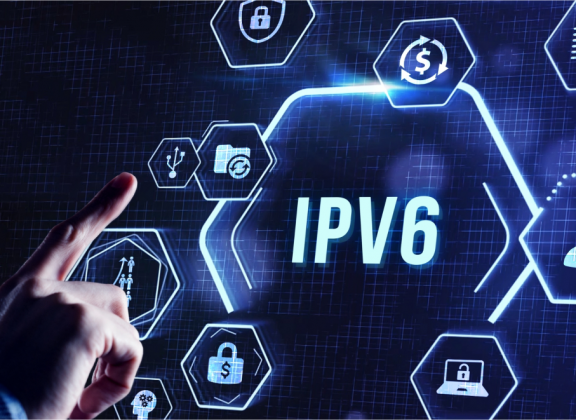As digital connectivity becomes increasingly central to everyday life, the infrastructure powering our online experiences must evolve to keep pace. One of the most significant yet often overlooked changes is the gradual transition from IPv4 to IPv6. Though this shift may seem like a background technical update, it’s beginning to influence how home networks—and particularly IPTV services—operate. For consumers purchasing IPTV set-top boxes and media players, understanding the implications of IPv6 is more relevant than ever.
The Evolution of Internet Addressing
At its foundation, the internet depends on IP addresses to route data between devices. IPv4, the fourth version of the Internet Protocol, has served this role for decades with a 32-bit system capable of assigning roughly 4.3 billion unique addresses. When the protocol was conceived, this number seemed more than sufficient. Today, however, the explosion of connected devices—from smartphones to smart home systems—has pushed IPv4 to its limits.
To address this issue, IPv6 introduces a 128-bit format, exponentially increasing the number of available addresses. This new standard does far more than just solve the exhaustion of IP addresses—it also introduces enhancements in network efficiency, security, and performance. With global adoption slowly accelerating, its effects are now reaching consumer-level technologies, including IPTV and media streaming hardware.
IPv6 and the Changing Landscape of Home Networks
One of IPv6’s most transformative attributes is the way it changes how devices connect within local and wide networks. By removing the need for NAT—an address-sharing mechanism commonly used with IPv4—IPv6 allows each device to have its own unique, globally routable IP address. This direct connection model can reduce complexity in home network setups and improve communication between devices and external services.
For IPTV and streaming devices, this means smoother connections, especially when reaching out to content delivery networks or cloud-based media platforms. Furthermore, IPv6 was designed with features like multicast in mind, which is particularly relevant for IPTV distribution models where the same stream must reach multiple viewers simultaneously without straining bandwidth.
Potential Effects on IPTV Performance and Consistency
Naturally, the key concern for most users is not the architecture behind internet protocols, but whether IPv6 can enhance or hinder their day-to-day IPTV experience. The answer depends on a range of factors, from the readiness of service providers to the robustness of home networking equipment and the capabilities of content distribution systems.
In ideal conditions, IPv6 offers measurable benefits to streaming performance. Because IPv6 eliminates many of the inefficiencies introduced by NAT and can create more optimized routing paths, users may experience reduced latency and fewer interruptions in video playback. For IPTV users, this could translate into more reliable HD and 4K streams, faster channel switching, and improved responsiveness overall.
Moreover, IPv6 simplifies the handshake process between devices and streaming services. By enabling clearer, more direct connections, it minimizes the risk of connectivity issues stemming from port mismanagement or inconsistent address mappings, common in IPv4 NAT environments. This can result in fewer setup complications and more resilient streaming sessions.
On the other hand, transitional environments—where IPv6 coexists with IPv4—can introduce complications. Many networks and devices currently operate in dual-stack mode, using both protocols simultaneously. If a device defaults to an unstable or incomplete IPv6 path while a more stable IPv4 connection exists, users could face degraded performance. Additionally, if a streaming platform hasn’t fully optimized its infrastructure for IPv6, inconsistencies in content delivery may arise.
Ensuring Device Readiness for IPv6
For consumers buying IPTV set-top boxes or media players, IPv6 compatibility is an increasingly important consideration. While most current-generation devices do support IPv6 to some degree, implementation quality varies. Some models may list IPv6 as a feature but lack the firmware support necessary for stable, real-world performance.
Regular software updates are a strong indicator of a manufacturer’s commitment to protocol stability and future support. Consumers should prioritize devices with active update cycles and transparent documentation about their IPv6 capabilities. This is particularly crucial in the context of IPTV, where real-time data flow and network reliability are critical to user satisfaction.
Retailers also play a vital role in this ecosystem. Offering guidance on IPv6 support and helping customers navigate the evolving home networking environment can improve trust and reduce product returns. As IPv6 adoption accelerates, users will benefit from proactive support and clarity regarding compatibility.
The ISP Factor and Broader Implications for IPTV
A critical variable in this transition is the ISP’s level of IPv6 deployment. In some countries, major providers have fully embraced IPv6 and now offer it as the default option for residential connections. In others, progress is slower, leaving users with limited or patchy IPv6 support.
Nevertheless, as IPv6 infrastructure matures, IPTV providers are beginning to take advantage of its features. Future-oriented services may benefit from IPv6’s ability to streamline content routing, improve service quality monitoring, and reduce the time required for diagnostics and support. These improvements could manifest as faster recovery from streaming issues, better personalization of services, or even enhanced security features.
Moreover, IPv6 helps networks scale to meet the needs of increasingly complex digital homes. With multiple smart devices streaming, updating, and syncing data concurrently, the expanded address space and simplified communication model of IPv6 provide a strong foundation for reliable, high-capacity entertainment networks.
While the shift to IPv6 is not a dramatic overhaul of the IPTV experience overnight, it represents a critical step toward a more streamlined, scalable, and reliable internet infrastructure. For IPTV users, the benefits of this change may appear gradually, but they are very real—especially in terms of connection stability, ease of setup, and future compatibility.
As the ecosystem matures and more stakeholders—from ISPs to device makers—embrace IPv6, consumers who invest in IPv6-ready hardware will be well-positioned to enjoy a smoother and more consistent media experience. The protocol change is not just a technical milestone—it’s a gateway to a more resilient and efficient future for home entertainment.
